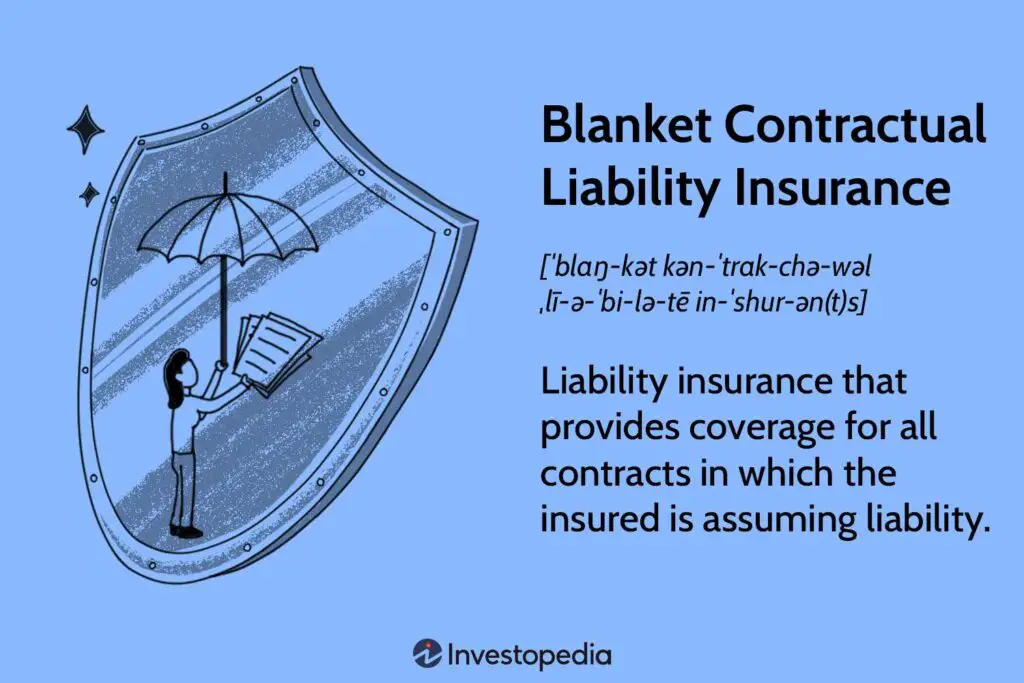Blanket coverage insurance is a comprehensive insurance policy that provides broad protection for multiple properties or assets under a single policy.
This form of insurance is designed to simplify coverage and potentially reduce costs for businesses and individuals with multiple insurable interests.

In this article, we’ll explore the basics of blanket coverage insurance, its benefits, applications, and important considerations.
Understanding Blanket Coverage Insurance
Blanket coverage insurance, also known as blanket policy or blanket insurance, is a type of insurance that covers multiple items or properties under one policy.
Instead of having separate policies for each asset, blanket coverage allows policyholders to group similar items under a single insurance umbrella.
Key Features of Blanket Coverage Insurance
- Multiple Asset Protection: Covers various properties or items under one policy.
- Flexible Coverage Limits: Often provides a single, high limit that applies across all covered assets.
- Simplified Administration: Reduces paperwork and management of multiple policies.
- Cost-Effective: Can potentially lower premiums compared to individual policies.
- Broad Protection: Offers comprehensive coverage for various risks.
Types of Blanket Coverage Insurance
Blanket coverage insurance can be applied to various types of assets and risks. Here are some common types:
1. Property Blanket Coverage
This type of blanket insurance covers multiple buildings or locations under a single policy. It benefits businesses with multiple locations or property owners with several real estate holdings.
Benefits of Property Blanket Coverage:
- Simplifies insurance management for multiple properties
- Provides flexibility in distributing coverage limits
- Can offer cost savings compared to individual policies
2. Inventory Blanket Coverage
Inventory blanket coverage protects a company’s entire inventory, regardless of location. This especially benefits businesses with fluctuating inventory levels or multiple storage locations.
Advantages of Inventory Blanket Coverage:
- Accommodates seasonal inventory fluctuations
- Covers inventory in transit between locations
- Simplifies record-keeping and claims processes
3. Equipment Blanket Coverage
This type of blanket insurance covers multiple pieces of equipment or machinery under a single policy. It’s beneficial for businesses with a large number of similar equipment items.
Critical Benefits of Equipment Blanket Coverage:
- Simplifies coverage for numerous equipment items
- Allows for easy addition or removal of equipment
- Can provide cost savings over individual equipment policies
4. Liability Blanket Coverage
Liability blanket coverage protects against various liability risks under one policy. This can include general liability, professional liability, and other specific liability coverages.
Advantages of Liability Blanket Coverage:
- Comprehensive protection against multiple liability risks
- Simplifies liability insurance management
- Can offer higher overall coverage limits
How Blanket Coverage Insurance Works
To better understand blanket coverage insurance, let’s break down its essential components and functionality:
Coverage Limits
Blanket coverage typically provides a single, high limit that applies across all covered assets. This limit is usually based on the total value of all insured items or properties.
For example:
A business with five locations might have a blanket property coverage limit of $10 million, which can be applied flexibly across all locations.
Premium Calculation
Premiums for blanket coverage are often calculated based on the total value of all covered assets and their associated risks. Factors that may influence premium costs include:
- Total value of insured assets
- Types of assets covered
- Geographic locations of properties
- Industry-specific risks
- Claims history
Claims Process
When a claim is made under a blanket coverage policy, the insurer assesses the damage or loss and provides compensation up to the policy limit. The flexibility of blanket coverage allows for easier claims processing, significantly when multiple assets are affected.
Benefits of Blanket Coverage Insurance
Blanket coverage insurance offers several advantages over traditional, separate policies:
- Simplified Administration:
- Reduces paperwork and policy management
- Streamlines renewal processes
- Simplifies claims handling
- Cost Savings:
- Can offer lower premiums due to economies of scale
- Reduces administrative costs associated with multiple policies
- Flexibility:
- Allows for easy addition or removal of assets
- Provides adaptable coverage limits across numerous items or properties
- Comprehensive Protection:
- Offers broad coverage for various risks under one policy
- Reduces the likelihood of coverage gaps
- Higher Overall Limits:
- Often provides higher total coverage limits compared to individual policies
Industries and Scenarios Suited for Blanket Coverage
Blanket coverage insurance is particularly beneficial for certain industries and scenarios:
1. Real Estate and Property Management
- Multi-location property owners
- Commercial real estate developers
- Residential landlords with multiple properties
2. Retail and Wholesale
- Businesses with multiple store locations
- Companies with large, diverse inventories
- Wholesalers with goods in various warehouses
3. Manufacturing
- Factories with multiple production lines
- Companies with various types of equipment and machinery
- Manufacturers with raw materials and finished goods inventories
4. Hospitality
- Hotel chains with multiple locations
- Restaurant groups with several establishments
- Resort complexes with various facilities
5. Agriculture
- Farms with multiple buildings and equipment
- Agricultural cooperatives with shared assets
- Large-scale livestock operations
Considerations When Choosing Blanket Coverage Insurance
While blanket coverage offers many benefits, it’s important to consider several factors before opting for this type of insurance:
- Accurate Valuation:
Ensure all covered assets are accurately valued to avoid underinsurance. - Policy Limits:
Verify that the total coverage limit is sufficient for all insured assets. - Coinsurance Clauses:
Be aware of any coinsurance requirements in the policy. - Exclusions and Limitations:
Carefully review policy exclusions and coverage limitations. - Risk Assessment:
Conduct a thorough risk assessment to ensure all potential risks are covered. - Cost Comparison:
Compare the cost of blanket coverage with individual policies to ensure cost-effectiveness. - Customization Options:
Explore options for tailoring the policy to your specific needs.
Comparing Blanket Coverage to Specific Insurance
To better understand the advantages and potential drawbacks of blanket coverage, let’s compare it to specific insurance policies:
| Aspect | Blanket Coverage | Specific Insurance |
|---|---|---|
| Coverage | Multiple assets under one policy | Individual policies for each asset |
| Flexibility | High flexibility in coverage distribution | Fixed coverage for each item |
| Administration | Simplified management | More complex with multiple policies |
| Cost | Potential for lower overall premiums | May be more expensive in total |
| Limits | Single high limit for all assets | Separate limits for each asset |
| Claims Process | Streamlined for multiple assets | Individual claims for each policy |
| Customization | Less tailored to individual assets | More specific to each item’s needs |
Case Studies: Blanket Coverage in Action
To illustrate the practical applications of blanket coverage insurance, let’s examine two hypothetical case studies:
Case Study 1: Retail Chain
Scenario: A regional retail chain with 20 store locations across three states.
Challenge: Managing individual property and inventory insurance policies for each location was becoming time-consuming and costly.
Solution: The company opted for a blanket coverage policy that included:
- Property coverage for all 20 locations
- Inventory coverage with a floating limit to accommodate seasonal fluctuations
- Equipment coverage for point-of-sale systems and other store equipment
Result:
- Simplified insurance management
- Reduced administrative costs
- Flexibility to allocate coverage as needed during peak seasons
- 15% reduction in overall insurance premiums
Case Study 2: Manufacturing Company
Scenario: A medium-sized manufacturing company with three production facilities and two warehouses.
Challenge: Ensuring comprehensive coverage for all locations, equipment, and inventory while managing costs.
Solution: The company implemented a blanket coverage policy encompassing:
- Property coverage for all five locations
- Equipment coverage for production machinery
- Inventory coverage for raw materials and finished goods
Result:
- Streamlined insurance administration
- Easier process for adding new equipment or expanding inventory
- Improved claim processing efficiency
- 20% increase in overall coverage limits within the same budget
Tips for Maximizing Blanket Coverage Insurance
To get the most out of your blanket coverage insurance, consider these tips:
- Regular Asset Valuation:
Conduct annual assessments of your covered assets to ensure accurate valuation and appropriate coverage limits. - Risk Management:
Implement strong risk management practices to reduce the likelihood of claims and potentially lower premiums. - Policy Review:
Regularly review your policy with your insurance provider to ensure it meets your needs as your business evolves. - Documentation:
Maintain detailed records of all covered assets, including purchase dates, values, and locations. - Employee Training:
Educate employees about the coverage and proper procedures for reporting incidents or potential claims. - Customization:
Work with your insurance provider to customize your blanket coverage to address your specific risks and needs. - Coordination with Other Policies:
Ensure your blanket coverage complements other insurance policies you may have, avoiding gaps or overlaps in coverage.
Conclusion
Blanket coverage insurance offers a comprehensive and flexible solution for businesses and individuals with multiple insurable assets.
Blanket coverage can be an excellent choice for many scenarios. It simplifies administration, potentially reduces costs, and provides broad protection.
It’s crucial to carefully assess your specific needs, understand the policy details, and work closely with insurance professionals to ensure you have the right coverage for your unique situation.
As with any insurance decision, thorough research and consultation with experts are key to making an informed choice.
Understanding the benefits and considerations of blanket coverage insurance can help you better protect your assets and streamline your insurance management.
Frequently Asked Questions (FAQ)
1. Is blanket coverage insurance always cheaper than individual policies?
While blanket coverage can often result in cost savings, it’s not guaranteed to be cheaper in every case. The cost-effectiveness depends on factors such as the total value of assets, types of risks covered, and specific policy terms. It’s important to compare quotes and consider the overall value, including administrative simplification, when making a decision.
2. Can I add or remove assets from a blanket coverage policy?
Yes, one of the advantages of blanket coverage is its flexibility. Most policies allow for the addition or removal of assets as your needs change. However, it’s crucial to communicate these changes to your insurance provider to ensure proper coverage and accurate premium calculations.
3. How does blanket coverage handle assets of varying values?
Blanket coverage typically provides a single limit that can be applied flexibly across all covered assets. This means that higher-value assets can receive more coverage when needed, without being limited by individual policy limits. However, it’s important to ensure that the total blanket limit is sufficient to cover the combined value of all assets.
4. Is blanket coverage suitable for small businesses?
Blanket coverage can be suitable for small businesses, especially those with multiple locations, diverse inventory, or various equipment. It can simplify insurance management and potentially offer cost savings. However, very small businesses with limited assets might find specific policies more appropriate. Consult with an insurance professional to determine the best approach for your specific situation.






